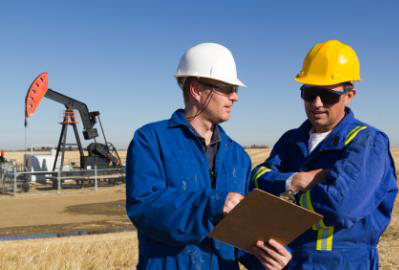COURSE OVERVIEW
DE0284 : Well Test Design and Analysis

OVERVIEW
| COURSE TITLE | : | DE0284 : Well Test Design and Analysis |
| COURSE DATE | : | Aug 10 - Aug 14 2025 |
| DURATION | : | 5 Days |
| INSTRUCTOR | : | Mr. Brendon Billings |
| VENUE | : | Doha, Qatar |
| COURSE FEE | : | $ 8500 |
| Request For Course Outline | ||
Course Description
This practical and highly-interactive course includes various practical sessions and exercises. Theory learnt will be applied using our state-of-the-art simulators.
Well testing is a dynamic process. At its simplest, a test discovers if a formation can flow and permits sampling of the produced fluid. Analysis can yield further information like the extent of formation damage near the borehole, reservoir permeability and heterogeneity, and initial productivity index. For this, engineers induce pressure transients by changing the rate that formation fluids enter the borehole and recording the resulting downhole pressure versus time.
Transient tests can also reveal the reservoir’s areal extent and vertical layering. Primary concerns in testing exploration wells are obtaining representative samples and estimating reservoir producibility. Fluid samples are needed to determine various physical parameters required for well test analysis, such as compressibility and viscosity, and for pressure-volume-temperature (PVT) analysis that unlocks how the hydrocarbon phases coexist at different pressures and temperatures.
The analysis and interpretation of well tests have evolved remarkably since the technique became established. Today, a unified methodology has developed to obtain the maximum information from any transient. Analysis, however, reaches deeper than just the near-wellbore region.
Today, it contributes so much to characterizing the reservoir that engineers increasingly refer to well testing as reservoir testing. Analysis can indicate the likely producing mechanism of the formation-for example, how much production comes from fractures, how much from intergranular porosity- and it can determine the producing zone’s permeability-thickness product, kh. It can see to the limits of the reservoir indicating the probable shape {but not orientation} of the reservoir boundaries and can show whether the primary recovery mechanism is from water or gas-cap support. This information becomes crucial in the appraisal and production stages of field development when engineers combine testing interpretation results with seismic and geologic data to refine their understanding of the reservoir.
Designing well tests involves many of the same steps the interpreter uses. This is because once a test has been proposed, both the pressure data and the data’s interpretation can be simulated to show that the test as designed meets it’s goals –design simulation requires estimates of formation and fluid parameters from nearby wells or the well in question. By predicting the likely shape of the log-log Δp and derivative curves, the engineer can demonstrate the feasibility of detecting and characterizing the anticipated reservoir features. For example, design simulation ensures that wellbore storage does not smother the feature being sought and guarantees a test that is long enough to view suspected reservoir boundaries. Another important feature of simulation is determining the accuracy and precision required of the pressure gauges. The design phase not only maps out the mechanics of a test, but also ensures that once underway objectives are met.
This course is designed to provide participants with a detailed and up-to-date overview of well test design and analysis. It covers the basic concepts, gas wells and multi-phase flow of well test analysis; the fluid properties and modifications for gas wells and multiphase flow; the horizontal and vertical permeability, skin and effective flowing length; the acidized horizontal wells; the effect of layering, formation thickness, constant pressure boundary (gas cap) and integration of production logging; the condensate-gas relative permeability and the importance of compositional analysis; the liquid drop-out effect, non-darcy flow in gas condensate wells and radial composite behavior; the drawdown and buildup test in oil and gas wells; the extended drawdown testing, compartmentalized reservoir behavior, extended buildups and recharging; the reserve estimation and flow regimes identification using the log-log diagnostic plot; and the characteristic pressure behavior for common bounded reservoir geometries.
During this interactive course, participants will learn the well test data affected by various wellbore and near-wellbore phenomena; the design of well test to meet desired objectives; estimating average drainage area pressure; analyzing well tests in hydraulically fractured wells, horizontal wells and naturally fractured reservoirs; the post hydraulic fracture analysis, finite conductivity fractures and bilinear and pseudo radial flow regimes; the type of curves for well test interpretation; the fracture skin and non-darcy flow in gas wells; the importance of pre-fracture testing and difficulties in analyzing WT incomplex; and the slug test analysis, non-ideal wellbore storage, injection wells and relevant real cases for analysis and interpretation.
link to course overview PDF
Well testing is a dynamic process. At its simplest, a test discovers if a formation can flow and permits sampling of the produced fluid. Analysis can yield further information like the extent of formation damage near the borehole, reservoir permeability and heterogeneity, and initial productivity index. For this, engineers induce pressure transients by changing the rate that formation fluids enter the borehole and recording the resulting downhole pressure versus time.
Transient tests can also reveal the reservoir’s areal extent and vertical layering. Primary concerns in testing exploration wells are obtaining representative samples and estimating reservoir producibility. Fluid samples are needed to determine various physical parameters required for well test analysis, such as compressibility and viscosity, and for pressure-volume-temperature (PVT) analysis that unlocks how the hydrocarbon phases coexist at different pressures and temperatures.
The analysis and interpretation of well tests have evolved remarkably since the technique became established. Today, a unified methodology has developed to obtain the maximum information from any transient. Analysis, however, reaches deeper than just the near-wellbore region.
Today, it contributes so much to characterizing the reservoir that engineers increasingly refer to well testing as reservoir testing. Analysis can indicate the likely producing mechanism of the formation-for example, how much production comes from fractures, how much from intergranular porosity- and it can determine the producing zone’s permeability-thickness product, kh. It can see to the limits of the reservoir indicating the probable shape {but not orientation} of the reservoir boundaries and can show whether the primary recovery mechanism is from water or gas-cap support. This information becomes crucial in the appraisal and production stages of field development when engineers combine testing interpretation results with seismic and geologic data to refine their understanding of the reservoir.
Designing well tests involves many of the same steps the interpreter uses. This is because once a test has been proposed, both the pressure data and the data’s interpretation can be simulated to show that the test as designed meets it’s goals –design simulation requires estimates of formation and fluid parameters from nearby wells or the well in question. By predicting the likely shape of the log-log Δp and derivative curves, the engineer can demonstrate the feasibility of detecting and characterizing the anticipated reservoir features. For example, design simulation ensures that wellbore storage does not smother the feature being sought and guarantees a test that is long enough to view suspected reservoir boundaries. Another important feature of simulation is determining the accuracy and precision required of the pressure gauges. The design phase not only maps out the mechanics of a test, but also ensures that once underway objectives are met.
This course is designed to provide participants with a detailed and up-to-date overview of well test design and analysis. It covers the basic concepts, gas wells and multi-phase flow of well test analysis; the fluid properties and modifications for gas wells and multiphase flow; the horizontal and vertical permeability, skin and effective flowing length; the acidized horizontal wells; the effect of layering, formation thickness, constant pressure boundary (gas cap) and integration of production logging; the condensate-gas relative permeability and the importance of compositional analysis; the liquid drop-out effect, non-darcy flow in gas condensate wells and radial composite behavior; the drawdown and buildup test in oil and gas wells; the extended drawdown testing, compartmentalized reservoir behavior, extended buildups and recharging; the reserve estimation and flow regimes identification using the log-log diagnostic plot; and the characteristic pressure behavior for common bounded reservoir geometries.
During this interactive course, participants will learn the well test data affected by various wellbore and near-wellbore phenomena; the design of well test to meet desired objectives; estimating average drainage area pressure; analyzing well tests in hydraulically fractured wells, horizontal wells and naturally fractured reservoirs; the post hydraulic fracture analysis, finite conductivity fractures and bilinear and pseudo radial flow regimes; the type of curves for well test interpretation; the fracture skin and non-darcy flow in gas wells; the importance of pre-fracture testing and difficulties in analyzing WT incomplex; and the slug test analysis, non-ideal wellbore storage, injection wells and relevant real cases for analysis and interpretation.
TRAINING METHODOLOGY
This interactive training course includes the following training methodologies:
LecturesPractical Workshops & Work Presentations
Hands-on Practical Exercises & Case Studies
Simulators (Hardware & Software) & Videos
In an unlikely event, the course instructor may modify the above training methodology for technical reasons.
VIRTUAL TRAINING (IF APPLICABLE)
If this course is delivered online as a Virtual Training, the following limitations will be applicable:
| Certificates | : | Only soft copy certificates will be issued |
| Training Materials | : | Only soft copy materials will be issued |
| Training Methodology | : | 80% theory, 20% practical |
| Training Program | : | 4 hours per day, from 09:30 to 13:30 |
RELATED COURSES

DE0750 : Wireline Operations & Techniques
- Date: Jan 04 - Jan 08 / 3 Days
- Location: Doha, Qatar
- Course Details Register
.jpg)
DE0441(AD6) : Advanced PVT and EOS Fluid Characterization
- Date: Jan 04 - Jan 08 / 3 Days
- Location: Doha, Qatar
- Course Details Register

DE0920 : Electric Submersible Pumping
- Date: Jan 04 - Jan 08 / 3 Days
- Location: Cairo, Egypt
- Course Details Register

DE0087 : Fractured Reservoir Characterisation
- Date: Jan 04 - Jan 08 / 3 Days
- Location: Doha, Qatar
- Course Details Register
